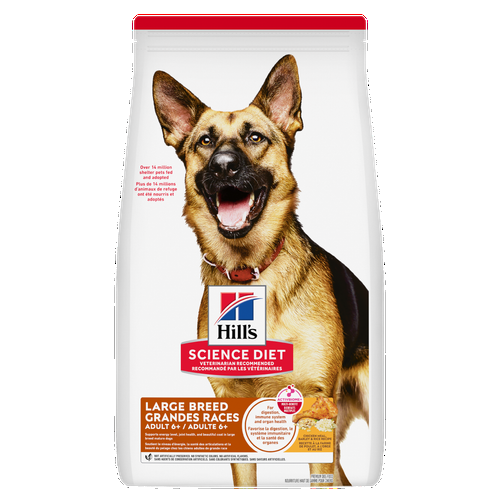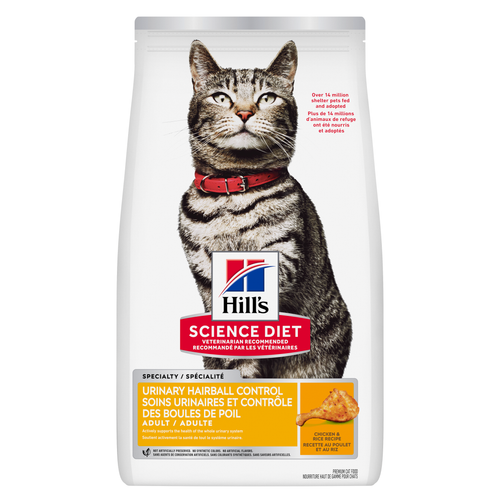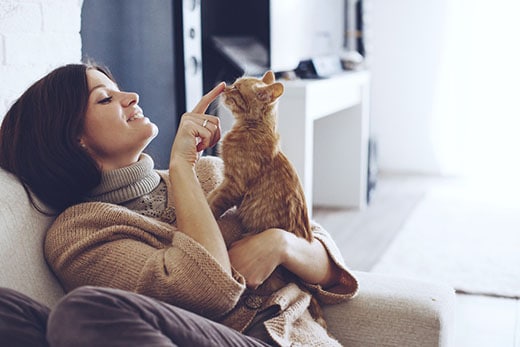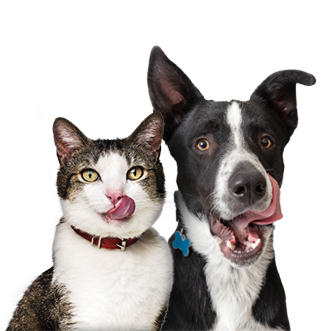
-
Find the right food for your petTake this quiz to see which food may be the best for your furry friend.Find the right food for your petTake this quiz to see which food may be the best for your furry friend.Featured products
 Adult 7+ Beef & Barley Entrée Dog Food
Adult 7+ Beef & Barley Entrée Dog FoodBeef & Barley recipe with precisely balanced nutrition to support mobility and muscle mass for older dogs.
Shop Now Adult 6+ Large Breed Chicken Meal, Barley & Rice Recipe Dog Food
Adult 6+ Large Breed Chicken Meal, Barley & Rice Recipe Dog FoodSupports energy & beautiful coat. Helps keep immune system, joints, heart & kidneys healthy
Shop Now Adult Beef & Barley Entrée Dog Food
Adult Beef & Barley Entrée Dog FoodBeef & Barley recipe with precisely balanced nutrition to keep adult dogs active and healthy
Shop NowFeatured products Adult 7+ Chicken Recipe Cat Food
Adult 7+ Chicken Recipe Cat FoodSupports energy level & beautiful fur. Helps keep immune system, heart & kidneys healthy.
Shop Now Adult Oral Care Chicken & Brown Rice Recipe Cat Food
Adult Oral Care Chicken & Brown Rice Recipe Cat FoodClinically proven kibble technology to reduce plaque & tartar build-up
Shop Now Adult Urinary Hairball Control Chicken & Rice Recipe Cat Food
Adult Urinary Hairball Control Chicken & Rice Recipe Cat FoodSupports the health of the whole urinary system with optimal levels of magnesium
Shop Now -
Dog
- Dog Tips & Articles
-
Health Category
- Weight
- Food & Environmental Sensitivities
- Urinary
- Digestive
- Joint
- Kidney
- Dental
- Cancer
-
Life Stage
- Puppy Nutrition
- Adult Nutrition
- Senior Nutrition
Cat- Cat Tips & Articles
-
Health Category
- Weight
- Skin & Food Sensitivities
- Urinary
- Digestive
- Kidney
- Dental
- Stress
- Cancer
-
Life Stage
- Kitten Nutrition
- Adult Nutrition
Featured articles Compare Your Pet Food's Calories to Other Brands
Compare Your Pet Food's Calories to Other BrandsCompare Hill's Science Diet dog and cat food's calories against other pet food brands and AAFCO recommended maximum calorie count.
Read More The Incredible Science Behind Your Pet's Microbiome
The Incredible Science Behind Your Pet's MicrobiomeLearn what a pet's microbiome is, how it contributes to your pet's gut & overall health, and why nutrition is important in maintaining healthy microbiomes.
Read More Pet Food Storage Tips
Pet Food Storage TipsDiscover how and where to store your dry, as well as canned, dog and cat food. Learn how to find the "best before" dates on all Hill's pet food packaging.
Read More -


If you're away from home for long periods of time and you've decided against enrolling your pet in dog or cat day care, hiring a pet sitter is a great way to ensure your fur baby is in good hands.
Once you find the perfect sitter, creating a pet sitter checklist will tell them just what to do while you're gone. When preparing for a pet sitter, try to think about the details of your pet's routine that are second nature to you but that the new sitter will need to know.
To help you feel confident about leaving your pooch or kitty with a new person, make sure to provide your sitter with the following.

1. Important Documents
Gather the following information and documents for your sitter:
- Your contact information
- A backup contact, in case you're ever unavailable
- Contact information for your veterinarian and a 24-hour emergency clinic
- Microchip information, if applicable (make sure that your information that is associated with the microchip is up to date, too.)
- Your pet's medical records, including vaccination records
- A recent photo of your pet that clearly shows their features and markings
- Any other documents that are specific to your pet, such as a pet insurance card
Even if you've sent your sitter digital copies of these documents, keep hard copies in a known spot in your home. That way, in case there's an emergency and the sitter's phone runs out of battery, for example, they'll have all the info they need.
2. Your Emergency Plan
Your sitter should be pet prepared if an emergency occurs. Inform them where to seek shelter in the event of a natural disaster, where the pet carrier is stored and how to coax your furry friend into the carrier — whether a pinch of catnip will help your anxious cat or a certain toy makes your dog feel comfortable.
Prepare a pet first-aid kit if you don't have one already. This should include items like gauze pads, nonstick bandages and hydrogen peroxide.
Make sure the sitter follows your emergency protocol if your pet needs medical assistance.
3. Pet Supplies
Stock up on pet food and treats, as well as waste bags, scoopers and/or cat litter. Don't forget about grooming accessories like toothbrushes, brushes and combs. If your sitter grooms your pet, ensure they're trained and capable of doing so safely.


Tasty Tips
Young pets may need several visits in their first year for vaccinations. Adult pets generally benefit from annual check-ups, while senior or special-needs pets might require more frequent visits.
4. Your Pet's Medicine
If your pet requires regular medicine, show your sitter exactly how you administer it, emphasizing what the dosage is and any side effects to look out for. Make sure they recognize the importance of following the dosing instructions.
You can also ask your vet's office to give your pet sitter the authority to pick up or request refills.
5. Details About Their Meal Plan
Sticking to a routine is important to your pet's health, so write down your pet's mealtime schedule. Include feeding times, food options and portions. Be specific about your pet's nutritional needs.
6. Potty Instructions
Because cats do their business in a litter box, your sitter doesn't necessarily need to be there when your feline friend goes to the bathroom, but they should scoop the box at least once per day (two or more times if you have multiple cats). Dogs are a different story. If they're older than 30 weeks, they need to go out three to four times daily, says the University of California, Davis, School of Veterinary Medicine, while young pups need to be let out up to 10 times per day.
7. Tips for Playtime
Providing enrichment for your pet is a big part of a sitter's job. Give your sitter dog exercise ideas based on your pooch's favorite activities — whether they like fetching, power walking or playing tag — or cat game ideas, such as hide-and-seek or a food puzzle. Familiarize your sitter with your pet's favorite toys and activities so that your pet and sitter will bond and your pet won't get bored.
Preparing for a pet sitter with a pet sitter checklist like this one will help you feel at ease when you leave your beloved furry family member in their care.


Christine O'Brien is a writer, mom, and long-time cat parent whose two Russian Blues rule the house. Her work also appears in Care.com, What to Expect, and Fit Pregnancy, where she writes about pets, pregnancy, and family life. Find and follow her on Instagram and Twitter @brovelliobrien.
Related products

Beef & Barley recipe with precisely balanced nutrition to keep adult dogs active and healthy

Beef & Barley recipe with precisely balanced nutrition to support mobility and muscle mass for older dogs.

Supports energy level & beautiful fur. Helps keep immune system, heart & kidneys healthy.

Supports energy & beautiful coat. Helps keep immune system, joints, heart & kidneys healthy
Related articles

Learn what a pet's microbiome is, how it contributes to your pet's gut & overall health, and why nutrition is important in maintaining healthy microbiomes.

Discover how and where to store your dry, as well as canned, dog and cat food. Learn how to find the "best before" dates on all Hill's pet food packaging.

Learn why nutrients like antioxidants & amino acids can help improve your pet's immune system, as well as top antioxidants to look for in pet food.

Compare Hill's Science Diet dog and cat food's calories against other pet food brands and AAFCO recommended maximum calorie count.

Put your pet on a diet without them knowing
Our low calorie formula helps you control your pet's weight. It's packed with high-quality protein for building lean muscles, and made with purposeful ingredients for a flavorful, nutritious meal. Clinically proven antioxidants, Vitamin C+E, help promote a healthy immune system.
Put your pet on a diet without them knowing
Our low calorie formula helps you control your pet's weight. It's packed with high-quality protein for building lean muscles, and made with purposeful ingredients for a flavorful, nutritious meal. Clinically proven antioxidants, Vitamin C+E, help promote a healthy immune system.

